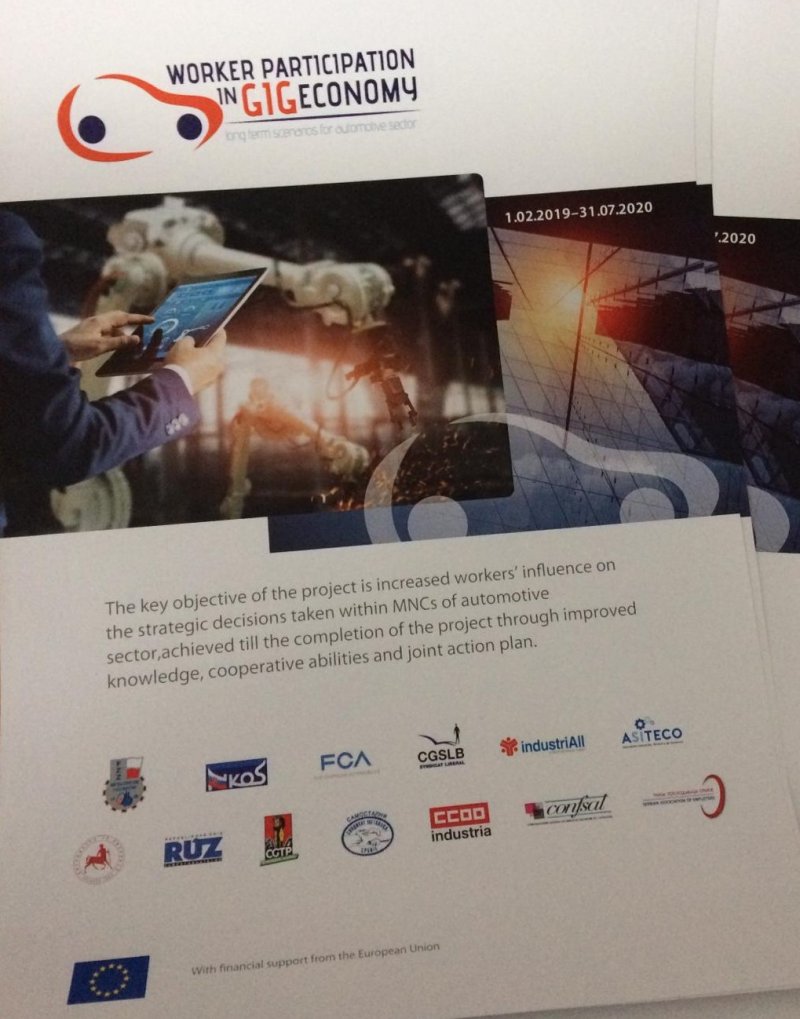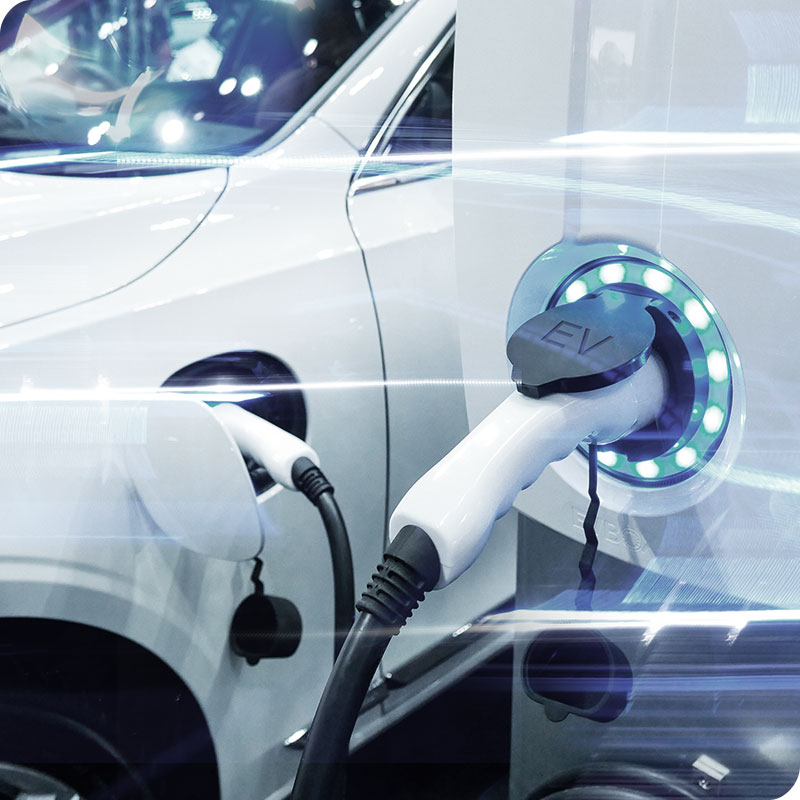Newsletter March 2019
European automotive industry: the challenge of reinventing itself.
The automotive industry, the "spine" of the European economy
Increasingly strict limits and increasingly ambitious objectives
Towards a new European fleet of "more profitable" cars
76% of recharge points are concentrated in only four countries
March 2019
European automotive industry: the challenge of reinventing itself.
The European automotive industry will face profound changes in the coming years. The sector - one of the most powerful in the European Union (EU) - must reinvent itself to comply with European goals in its fight against climate change: reduce CO2 emissions and decarbonise transport.
In this regard, starting on 1 of September the cycle of consumption WLTP (Worldwide harmonised Light duty vehicle Test Procedure) will begin to apply to all new vehicles that are going to be registered.
This new approval, which replaces the New European Driving Cycle (NEDC) effect since 1992, began to be applied in September last year for the models that entered the market for the first time and it introduces a new method with the objective of determining a consumption of vehicles and their more "realistic" CO2 emissions.
With the dieselgate as a backdrop, the EU countries opened the pandora's box for the European automotive industry last June, when the environment ministers began discussing the long-term reduction of polluting emissions in the automotive industry, whose contribution will be essential to meet the objectives of the Paris Agreement in 2030 and to liberate the economy from CO2 by 2050.
"There is no decarbonisation of the economy without decarbonisation of the transport," summarized the Spanish Minister of the Ecological Transition, Teresa Ribera, in her speech at the European Council of Ministers held in Luxembourg.
We will have to wait for the Member States and the European Parliament to set/establish their positions (before the end of the year) and negotiate the final agreement before the European elections in May 2019, so that the Community regulations see the light of day.
The automotive industry, the "spine" of the European economy
According to the data of the employers' of the European Automobile Manufacturers' Association (ACEA), the fifteen main Member States of the European Union annually collect an average of 413,000 million euros in taxes on vehicles, which corresponds to "almost three times" the total budget of the EU.
This means that the automotive industry is the "spine" of the European economy, according to the general secretary of the European Automobile Manufacturers' Association (ACEA), Erik Jonnaert, who highlighted in his last letter to the associates: if you compare it with other countries, the EU leads the way in terms of investment in R & D, followed by Japan (29,800 million euros annually), the US (18,500 million) and China (5,400 million).
In addition, 13.3 million people (or 6.1% of union workers) work directly or indirectly in the sector, and each year the number of the employees increases.
The country with the biggest number of professionals dedicated to the industry in 2016, according to Eurostat, was -much above the rest- Germany (857,336 workers), followed by France (216,000), Poland (187,334) and Romania (174,321).
With the fraud of the Volkswagen emissions discovered in 2015 - also known as "Dieselgate" - as a backdrop, the key to the debate lies in achieving modernization of the car and van sector, quickly enough to respect the path of environmental transformation without harming for that the industry that has about 12 million workers in Europe.
With regard to the pollution of the sector, cars and vans account for 13% of greenhouse gas emissions in the EU, second only to energy suppliers (30%) and industry (19%).
Increasingly strict limits and increasingly ambitious objectives
The proposal for a Regulation of the European Parliament and of the Council at the beginning of last June, established the debate on the rules of conduct on the issue of new passenger cars and new light commercial vehicles as part of the Union's integrated approach to reducing CO2 emissions from light vehicles and amending the EC Regulation of 2007.
In November of last year, the EC presented a proposal for a Regulation establishing new CO2 emission standards for cars and vans, among which was the contribution to the reduction target of 30% for the year 2030 in the sectors which are not included in the Emissions Trading Scheme (ETS) set by the European Council and the achievement of the objectives of the Paris Agreement.
Increasingly strict limits and increasingly ambitious objectives
The proposal for a Regulation of the European Parliament and of the Council at the beginning of last June, established the debate on the rules of conduct on the issue of new passenger cars and new light commercial vehicles as part of the Union's integrated approach to reducing CO2 emissions from light vehicles and amending the EC Regulation of 2007.
In November of last year, the EC presented a proposal for a Regulation establishing new CO2 emission standards for cars and vans, among which was the contribution to the reduction target of 30% for the year 2030 in the sectors which are not included in the Emissions Trading Scheme (ETS) set by the European Council and the achievement of the objectives of the Paris Agreement.
For it, the EC suggests changes in the objectives of reducing CO2 emissions established in the previous legislation: reduction of 15% between 2025 and 2029 for both cars and vans and 30% from 2030 for both cars and vans.
The Commission´s proposal also includes a mechanism that would apply from 2025 to encourage manufacturers to introduce a greater number of zero emission or low emission vehicles (such as electric vehicles or plug-in electric hybrids) into the market and thus increase the use of such vehicles.
The EC's proposal also considers fining the manufacturers that do not meet the agreed levels and it encourages the development of electric or hybrid "clean vehicles", understood as those that emit between 0 and 50 grams of CO2 per kilometer and that currently represent only 1% of the European rolling stock fleet.
Under the 2030 climate and energy package, EU regulators propose ambitious policy objectives to reduce CO2 emissions, having already produced significant improvements in the performance of new vehicles and with a commitment to do more.
Towards a new European fleet of "more profitable" cars
And even above the targets set by the EU for the year 2030, for the year 2021 it has been marked that CO2 emissions from new cars that hit the roads will be 42% lower than new cars in 2005. However, at the moment, new cars only represent 5% of the total European fleet.
The ACEA warns that it will not come to fruition if the potential of renewing the fleet and investments in more efficient vehicles are not supported. In addition, it also highlights the fact that the renewal of the fleet is "the most profitable" and, in practice, the quickest way to reduce emissions, while at the same time encouraging private and commercial consumption in Europe, which it is one of the main drivers of GDP growth.
Future reductions in CO2 depend to a large extent on sales of alternative cars, but the affordability remains a major barrier for many Europeans in this regard. The latest data published by ACEA show that 85% of all cars with electric charge are sold in only six countries in Western Europe with some of the highest GDP.
"Already with the Commission's current proposal for a reference point, we would have to move from less than 1% of today's battery-electric car sales to 30% within less than 12 years, and Parliament is proposing even more aggressive targets, going up to 50%,” said Jonnaert.
On the contrary, in countries with a GDP of less than 18,000 euros, such as those in Central and Eastern Europe, the market share of electrically charged cars still remains close to zero. This is a serious problem, especially considering the proposal of the European Commission to establish "benchmarks/reference ponits" across the EU for sales of electric vehicles with full battery, at the level of 15% by 2025 and 30% by 2030.
76% of recharge points are concentrated in only four countries
Adding to the difficulties, the ACEA data shows that of the approximately 100,000 recharge points currently available, 76% of them are concentrated in only four countries (Holland, Germany, France, United Kingdom). At the other end of the spectrum, a vast country like Romania, approximately six times larger than the Netherlands, has only 144 recharge points (0.1% of the EU total).
According to ACEA, there is not only a clear division in the sales of electric cars between Central and Eastern Europe, but also a strong North-South division (for example, Greece, 0.2%, Italy, 0.2% and Spain, 0.6%).
Source: Agencia EFE














